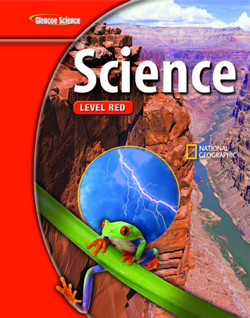1 A) solid, liquid, gas, and plasma B) solid, liquid, vacuum, and plasma C) heat, temperature, length, and mass D) color, shape, size, and density 2 A) the amount of mass in a given volume B) the length of a certain mass C) the shape of a certain mass D) the amount of volume to a certain shape 3 A) the ability to be hammered, pressed, or rolled into thin sheets B) the hardness of an object C) the shininess of an object D) the ability to be drawn out into a wire 4 A) ice cubes melting B) liquid filling a glass C) paper burning D) exposing photographic film 5 A) to prevent the vitamins from going through a chemical change from exposure to light B) to stop any physical changes inside the bottle C) to make the vitamins more powerful D) to promote chemical changes in the vitamins 6 A) water B) copper C) platinum D) silver 7 A) shiny appearance B) liquid at room temperature C) dull appearance D) soft 8 A) is the same as the old substance B) is a gas C) has been created D) has new physical properties 9 A) vitamins B) sugar C) water D) limestone 10 A) color and shape B) melting point and boiling point C) length and mass D) flammability and reactivity 11 A) yes B) sometimes C) no D) it has not yet been determined 12 A) volume B) length C) boiling point D) mass 13 A) smell it B) touch it C) taste it D) test its boiling point 14 A) the same substance B) new substance C) fire D) a change of state 15 A) a change of state B) a chemical change C) a nuclear change D) a physical change 16 A) because this is a chemical property B) because the matter has changed state C) because the particles of the liquid are constantly moving D) because the particles do not move 17 A) freezing B) burning C) boiling D) melting 18 A) liquid at room temperature B) pH of 7 C) not flammable D) reacts with sodium 19 A) It turns into smoke and ash. B) It turns into plasma and remains that way. C) It disappears. D) It changes state. 20 A) changed B) created or destroyed C) hidden D) burned














